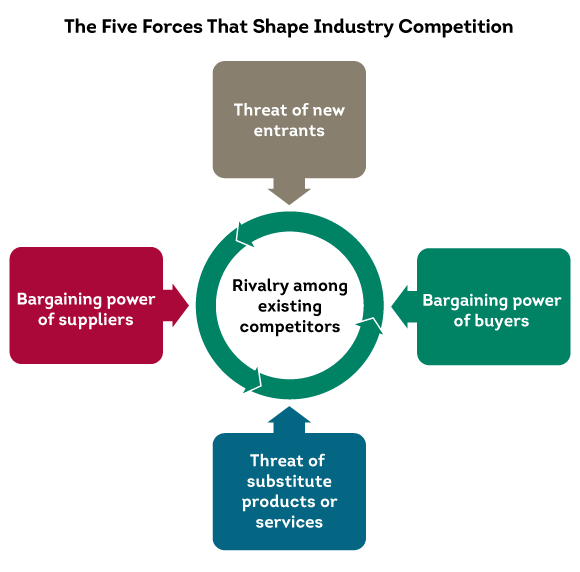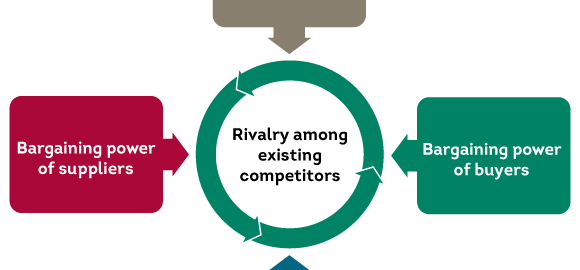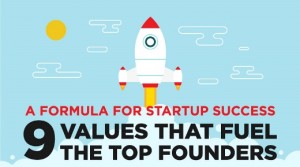It’s all too easy for businesses to focus heavily on their direct competitors when devising a marketing strategy. Yes, competitor rivalry has a significant impact on a company’s growth or profitability. But it’s vital for businesses to take a step back and decide what’s really influencing their position in the market. Porter’s Five Forces is a brilliant strategy tool devised to help companies consider a number of other forces.
What is the Porter’s Five Forces tool?
Investopedia defines this model as one that, “identifies and analyses five competitive forces that shape every industry, and helps determine an industry’s weaknesses and strengths.”
The five forces are:
- Competitive rivalry
- Threat of new entry
- Supplier power
- Buyer power
- Threat of substitution

What is the Porter’s Five Forces tool used for?
This is one of the most common tools KG Moore uses with new clients. It helps us to see forces that can impact your business in a way that you might not otherwise consider. The Five Forces can be applied to any industry. Using this tool, business managers can hone in on what causes profitability or constraints in their industry, and make more informed decisions about where to spend resources to increase their power.
Depending on the nature of the business, each of the Five Forces raises a variety of questions or possibilities an organisation needs to consider. Some examples are:
- Competitive rivalry – Are your rivals a threat to your entire business or just a portion of your business? Can you better their offering? Can you create more value to your customers if you can cooperate with your competitors in the marketplace?
- Threat of new entry – How easy is it for new entrants to enter your industry? Does this diminish your power in the industry? Can you make it more difficult for a new entrant to emulate your product or service?
- Supplier power – How much clout do your suppliers have? Can they drive up their prices because they know your choice is limited or because they offer a unique product you can’t get elsewhere?
- Buyer power – How powerful are your customers? Can they easily choose a different product or service? Is there any way you can reduce this power, such as by offering longer-term contracts that tie them to your business?
- Threat of substitution – Who or what could be considered a substitute for your business? A high-street book seller, for example, might be concerned about the growing popularity of e-reader devices and online retailers.
In an interview with the Harvard Business Review, Michael E Porter, author of the article that underlies Porter’s Five Forces, says that the tool was devised because business managers often look too narrowly at competition. They often underestimate many of the factors that can affect business growth.
In the interview, Porter discusses the Five Forces at work in the notoriously competitive airline industry. Here, rivalry is intense, with huge price wars. New entrants are continuous and suppliers have a lot of clout. Customers have a wide choice of services and can search for the best deals online. Airlines respond by making it more difficult for customers to change their minds once they’ve committed to purchasing tickets. Substitute products are also numerous – customers can choose to travel by train, car or ferry. Another threat of substitution could be the growing popularity of holidaying locally.
Porter says the Five Forces model can help businesses to move away from destructive battles or price wars with competitors. In other words, it’s entirely possible for companies to compete by offering different attributes to create more value to customers. Today’s major software companies, for example, often recognise the value of their key competitors and produce software that integrates with rival products.
When do I use Porter’s Five Forces and how often?
KG Moore recommends the advice of an article by Mind Tools, which says the model, “helps you understand both the strength of your current competitive position and the strength of a position you’re considering moving into.” We suggest using the tool every time you want to assess the strength of your market position. It could be when you’re considering moving into new sectors or markets, or if you’re struggling in any area and need to investigate the cause.
Porter’s Five Forces in practice
Porter’s Five Forces is among KG Moore’s most used strategy tools for work with new clients. We often find that these businesses invest most of their time and effort in researching competitor rivalry and initially fail to recognise other elements that affect their profit and growth.
Who developed Porter’s Five Forces?
Michael E. Porter is the Bishop William Lawrence University Professor at Harvard Business School. According to the Harvard Business Review website, Porter wrote How Competitive Forces Shape Strategy, published in 1979, which led to his Five Forces framework.
We use a variety of strategy tools to help our clients define their marketing strategy. Essentially, the tools help you with your thinking and decision making during the strategic marketing planning process.
Business Articles | Business 2 Community
(719)






